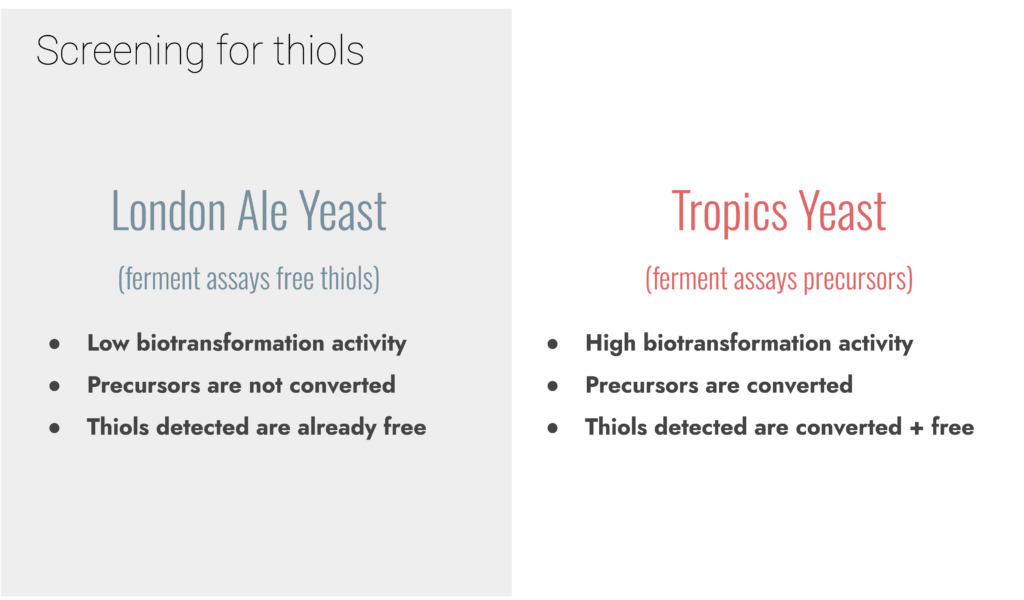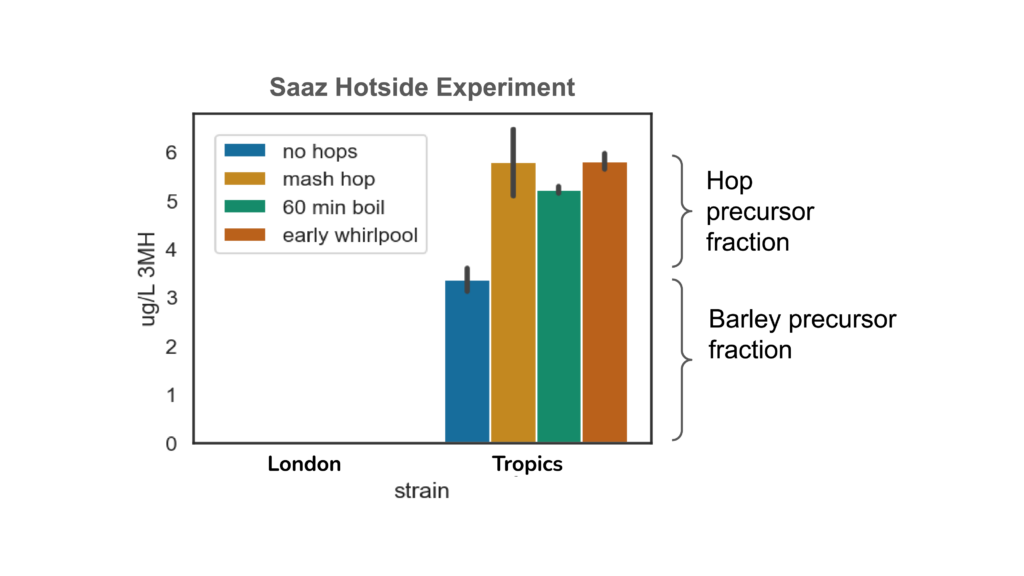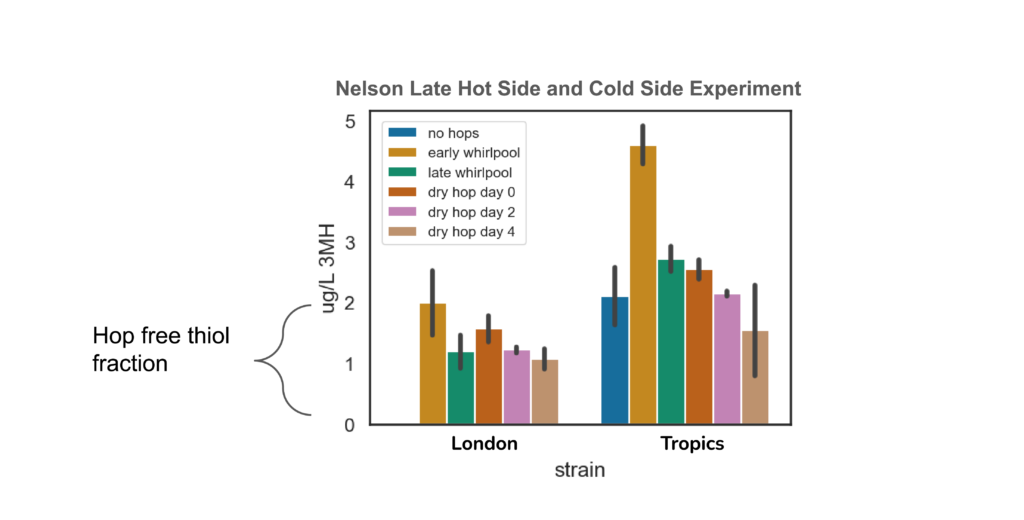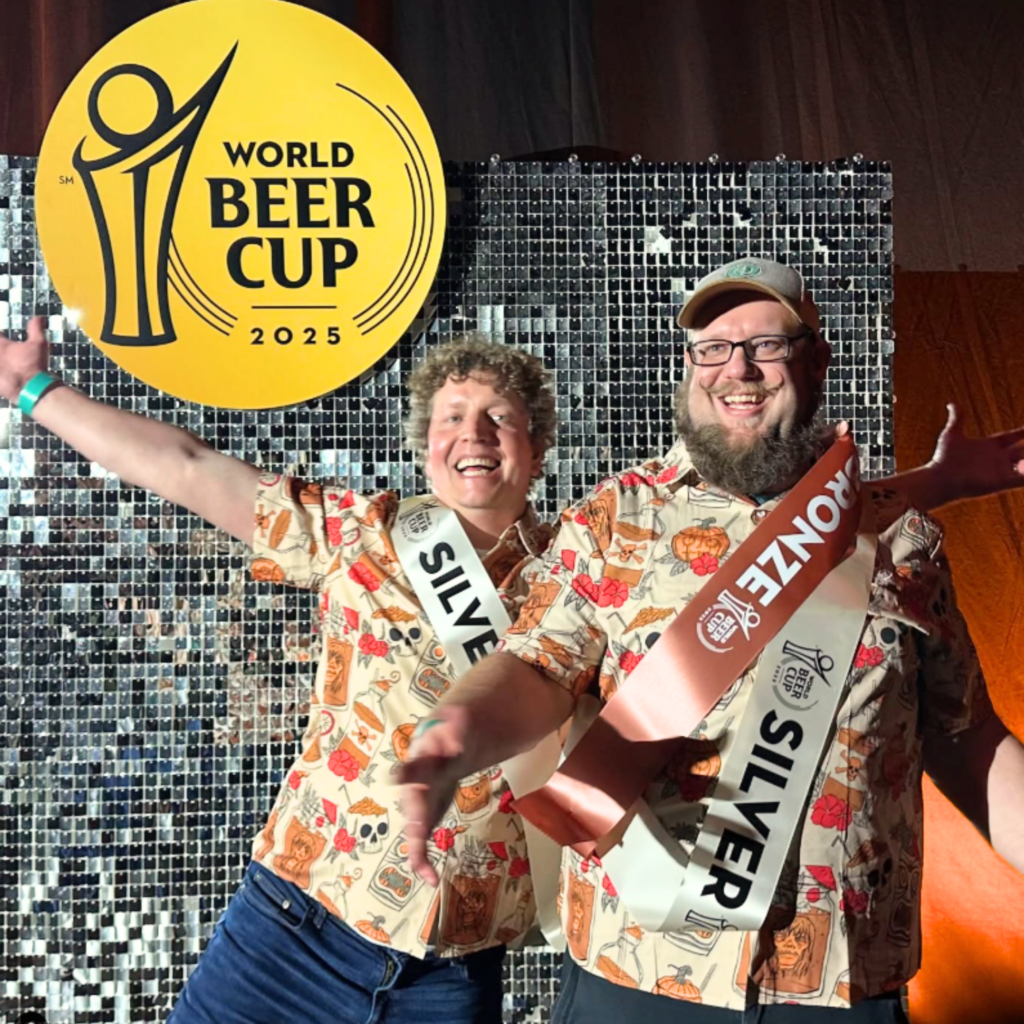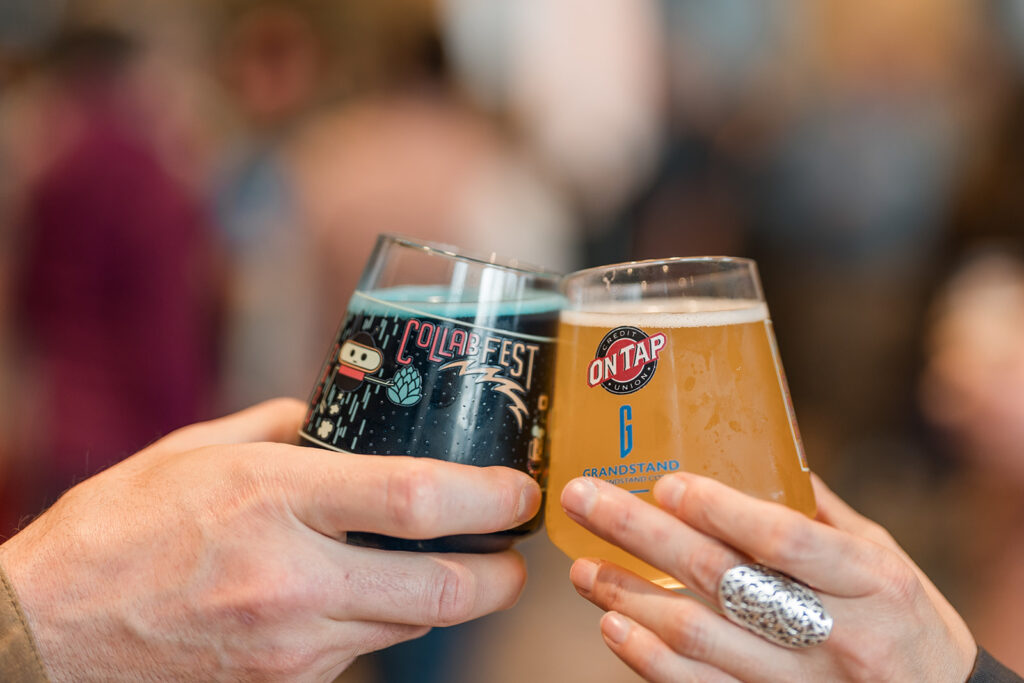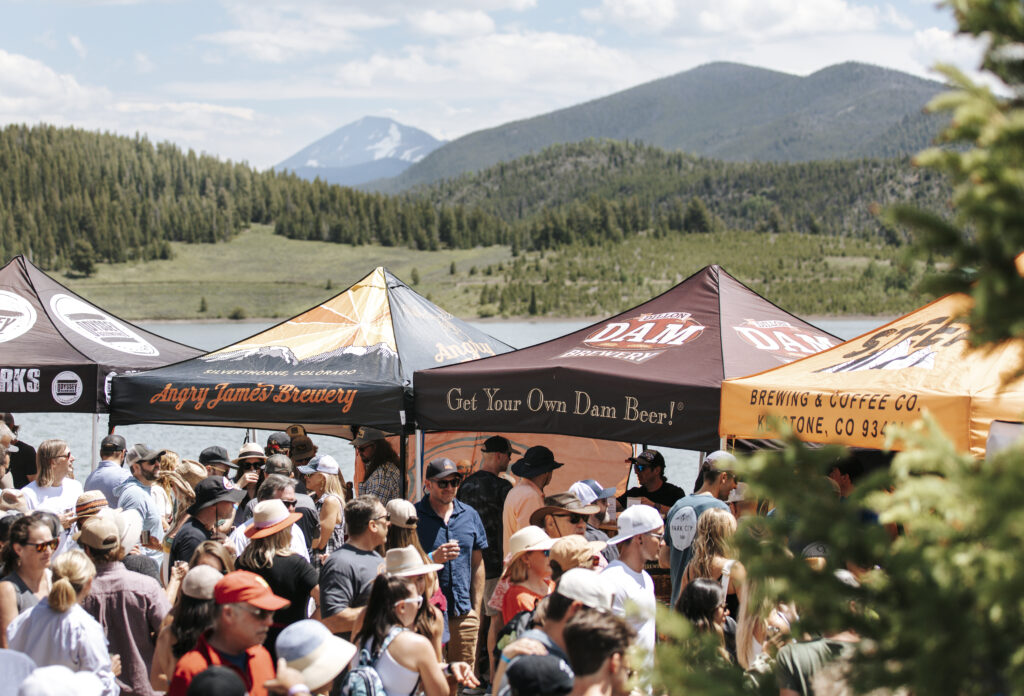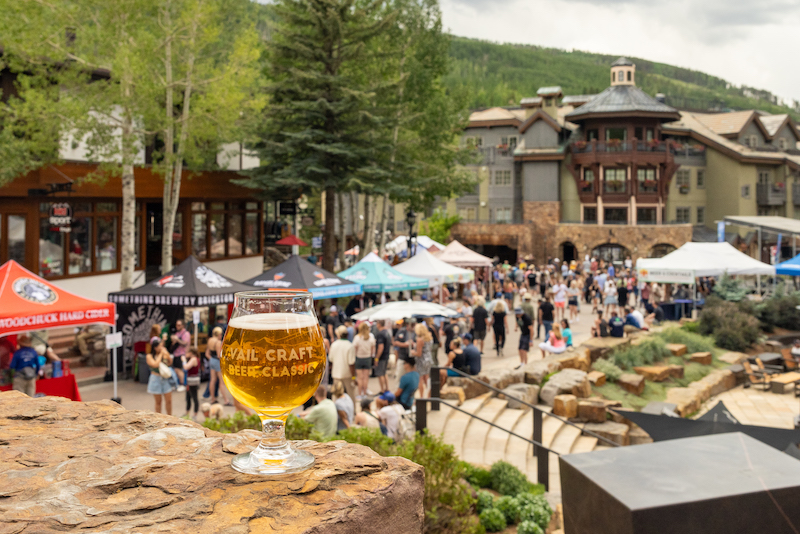By Nick Harris, Cofounder at Berkeley Yeast
Tropical flavor intensity in beer correlates with the concentration of thiols such as 3MH and 3MHA. These two molecules can contribute big notes of guava, passionfruit, and grapefruit. Certain yeast strains have been bioengineered for dramatically enhanced thiol biotransformation and produce beer with significantly more tropical character than beer produced with other yeast.
These bioengineered yeast strains are being used across the industry to amplify tropical notes in IPAs, and other tropical forward styles.
The hopping strategy used can have an impact on how much tropical character is achieved when using bioengineered yeast. In this blog post, we dissect hop addition timing to inform how to steer your beer in a more tropical direction.
Thiols in Malt and Hops
Bound thiols, also known as thiol precursors, are found in both malt and hops. Thiol precursors are flavorless, while their unbound/free counterparts are extremely aromatic and flavorful. In order for thiol precursors to be converted to free thiols, they must first be extracted from the plant material and subsequently biotransformed during fermentation by yeast.
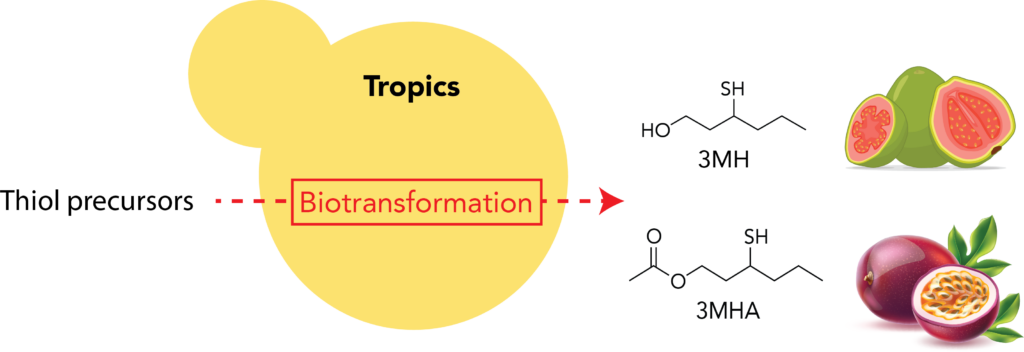
Some hops, like Nelson Sauvin, have high concentrations of free thiols, which only require extraction and do not require contact with yeast in order to contribute tropical character to beer. Bound thiols however, are more abundant and will only be biotransformed if the yeast has this enzymatic capability. Most naturally occurring yeast possess little to no thiol-releasing enzymatic activity, so in order to achieve significant thiol biotransformation, a bioengineered strain is typically required.
Experimental Design
In order to dissect the optimal timing for hop additions, we set up an experiment utilizing two yeast strains and two hops. London Ale yeast was chosen since it exhibits little biotransformation activity and Tropics London was chosen since it is on the other end of the spectrum and has extremely high biotransformation activity. For hops, we selected Saaz, since it is known to have high concentrations of precursors but low concentrations of free thiols, and we used Nelson since it contains a relatively high concentration of free thiols. One note on Saaz is that while we used it for this experiment to represent a high precursor hop, we advise against using it in any IPA recipe. We have found that even small amounts of Saaz can contribute vegetal and spicy flavors that typically don’t meld well in a tropical IPA.
We set up replicate benchtop fermentations and added 2 lb/BBL of hops at different time points, which included additions to the mash, kettle, whirlpool, and different days during fermentation. Once terminal gravity was reached, we assayed each fermentation for free thiols using liquid chromatography mass spectrometry (LCMS).
By comparing the free thiol concentrations in beer produced by these two yeast strains using the same hopping regimens, we were able to tease apart which thiols originated from precursors that were subsequently biotransformed by yeast and which portion of the thiols were already in the free form. The results of the experiment shed light on when to add hops to extract precursors and when to add hops to extract free thiols.
Results
In the Saaz hot side experiment, we observed no detectable thiols released in the London fermented samples, while we see a sizeable increase in thiols produced by Tropics in the ferments that contained a hop charge. We included a no hop control, which allowed us to to discern the portion of thiols that originated from malt derived precursors and those that are hop derived. Adding hops to the mash and during whirlpool had a similar effect.
In the Nelson experiment, we detected an appreciable amount of thiols in the London ferments, which corroborates with previous findings that Nelson contains free thiols that are readily extracted into beer. The observed differences in the London ferments are not statistically significant. In the Tropics ferments however, we see the largest impact from a whirlpool addition. It may be that in addition to free thiols, more thiol precursors were also extracted at this time point than during later additions.
Discussion
For recipes that would benefit from the contribution of thiols, the most effective way for brewers to achieve this is to use a bioengineered yeast strain with high biotransformation activity. These strains can convert precursors in both malt and hops into free thiols. In order to maximize production of thiols, hops that are high in precursors should be added hot side, but regardless of the exact timing of the addition, whether to the mash, boil, or whirlpool the effect is likely to be similar. When using hops that are high in free thiols, the best strategy is to add these hops early on, either in the whirlpool or at the beginning of fermentation. These recommendations are based on the experiments described above, however you may find that your process, equipment, and ingredients may also impact final thiol concentrations.
For additional information, please feel free to contact Nick. nick@berkeleyyeast.com



